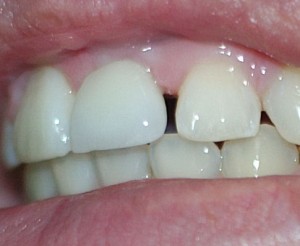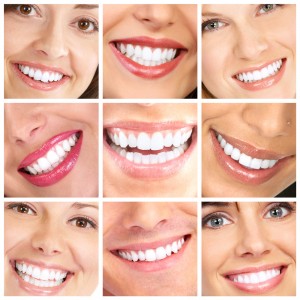Rare is the person who goes through life without a single cavity. (If you know any people this fortunate, we would love to meet them!) Of course, a cavity means a filling, and a filling means—you guessed it—a drill. Or maybe not. Today, we can use air abrasion to remove decay and portions of tooth structure to prepare your tooth for a filling.
Continue reading Air Abrasion
Category: Restorative Dentistry
Hey, Dentists! Make ‘Em Laugh!

Laughing gas, or nitrous oxide, has been used routinely in dental offices since 1863. It’s a safe, effective sedation option for dental patients seeking a way to control feeling overly anxious about their treatments.
Nearly 75% of American adults experience mild to severe dental anxiety. Causes for dental fears are varied, and may include:
- Previous painful experiences at the dentist’s office
- Dealing with general anxiety, mood, or posttraumatic stress disorders
- Feeling out of control or helpless
- Having low pain threshold or fear of pain
- Embarrassment about the look of teeth
- Phobic about needles and/or anxious about drills
- Sensitive gag reflex
If you do suffer fear or anxiety about dentistry, the good news is that most dentists offer sedation dentistry. One of the most common forms of sedation is nitrous oxide, often referred to as laughing gas. Continue reading Hey, Dentists! Make ‘Em Laugh!
High Blood Pressure and Oral Health
 High blood pressure, also called HBP or hypertension, can affect your ability to receive oral healthcare. Performing dental treatments on patients with hypertension can be detrimental! If your blood pressure is too high, many dentists won’t schedule procedures until you receive a health assessment from your medical doctor.
High blood pressure, also called HBP or hypertension, can affect your ability to receive oral healthcare. Performing dental treatments on patients with hypertension can be detrimental! If your blood pressure is too high, many dentists won’t schedule procedures until you receive a health assessment from your medical doctor.
What is high blood pressure?
The two forces measured for your blood pressure reading are the blood pumping out of your heart and into your arteries (systolic), and the heart resting between beats (diastolic). Normal blood pressure readings for a healthy individuals who are 20 years and older should be below 120 for systolic and below 80 for diastolic. If blood pressure readings are consistently higher than 120/80 then you’re probably suffering from hypertension.
According to Heart.org, the website of the American Heart Association, “Untreated high blood pressure damages and scars your arteries.” High blood pressure increases risks of blood clots, organ damage, heart attacks, and strokes. High blood pressure also results increased plaque build-up and weakening blood vessels.
How does high blood pressure affect my dental health?
In a white paper released by the American Diagnostic Corporation, it states: “…elevations of blood pressure can increase a patient’s risk of experiencing a stroke or myocardial infarctions in the dental chair.” Patients with hypertension can also be in danger from local anesthetics that use vasoconstrictors, such as epinephrine, which increase blood pressure and heart arrhythmia.
High blood pressure medications can also affect your dental wellbeing. Some prescriptions cause dry mouth and may also alter your sense of taste. Meds with calcium blockers can also create gum overgrowth, which can affect a patient’s ability to chew and may require periodontal surgery to correct.
Will my dentist still treat me if I have high blood pressure?
Most dentists will not treat patients who have high blood pressure, especially if your numbers are in the Stage 1 or higher range for hypertension. (View the chart at the American Heart Association’s website.) If you’re being treated for high blood pressure, it’s important for you to discuss your condition and your medications with your dentist before beginning any treatments. Most patients being treated for high blood pressure can still have dental procedures, take anti-anxiety medications (often used for oral conscious sedation), and safely receive local anesthetics.
Filling in the Information Gaps about Diastema
 Diastema is a term used to describe a gap between two teeth. Many celebrities have a diastema including Madonna, Eddie Murphy, Jack Black, Lauren Hutton, Amelia Earheart, and Willie Nelson. For some people, a diastema makes their smile unique, and they choose to keep the charming midline gap.
Diastema is a term used to describe a gap between two teeth. Many celebrities have a diastema including Madonna, Eddie Murphy, Jack Black, Lauren Hutton, Amelia Earheart, and Willie Nelson. For some people, a diastema makes their smile unique, and they choose to keep the charming midline gap.
Animal Tendencies
A diastema is a natural feature of several mammal species, especially herbivores. The diastema in the dentition of animals such as rodents, sheep, and beavers allow food to be routed into the cheek so consumption can continue unimpeded. A diastema also allows material from gnawing to be expelled through the gap. Continue reading Filling in the Information Gaps about Diastema
Catch a Frog Under the Full Moon … and Other Toothache Cures
 Toothaches, and attempts to cure them, have no doubt been around as long as we have. In fact, researchers discovered evidence of tooth drilling that took place more than 9,000 years ago. It seems some enterprising dentist-in-training put down his spear and picked up a crude dental drill to fix cavity-ridden molars in his fellow Neolithic man. The good news is that the process was unbelievably precise and took about minute. The bad news? No anesthesia!
Toothaches, and attempts to cure them, have no doubt been around as long as we have. In fact, researchers discovered evidence of tooth drilling that took place more than 9,000 years ago. It seems some enterprising dentist-in-training put down his spear and picked up a crude dental drill to fix cavity-ridden molars in his fellow Neolithic man. The good news is that the process was unbelievably precise and took about minute. The bad news? No anesthesia!
Tooth Worms are Eeeeeeevil!
It was long believed cavities were caused by worms that burrowed inside the tooth and caused pain by wiggling around. The earliest reference to tooth worms was in a Sumerian text dated around 5,000 BCE. Right up until the 18th century most people, including dental practitioners, believed that tooth worms caused decay and discomfort.
Some ancient doctors mistook tooth nerves as tooth worms, and removed them. It was the barbaric version of root canal therapy. Well, except the doctors would also take out the entire tooth. Present-day dentists try to avoid extractions because tooth roots are important to the health and strength of the jawbone. Continue reading Catch a Frog Under the Full Moon … and Other Toothache Cures
Five Reasons Why It’s Worthwhile to Smile
 Nineteenth century novelist George Eliot once said, “Wear a smile and have friends; wear a scowl and have wrinkles.”
Nineteenth century novelist George Eliot once said, “Wear a smile and have friends; wear a scowl and have wrinkles.”
Yet smiling is more than just a way to convince your mother that you really did enjoy that meatloaf surprise. Even the smallest upward lip curve—whether or not it’s sincerely delivered—has far-reaching emotional and physical benefits.
Here are five advantages of turning that frown upside down:
1. Studies have shown that smiling lowers blood pressure. If you need some instant Zen, then all you have to do is smile. Chanting is optional (especially if you’re standing in line at the grocery store). Continue reading Five Reasons Why It’s Worthwhile to Smile
